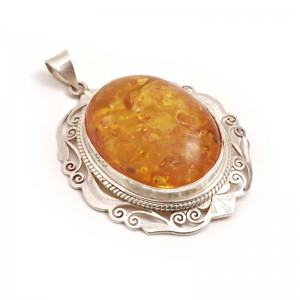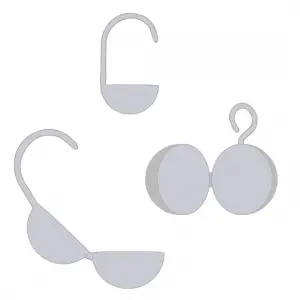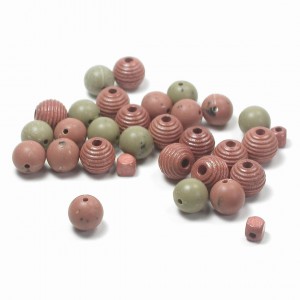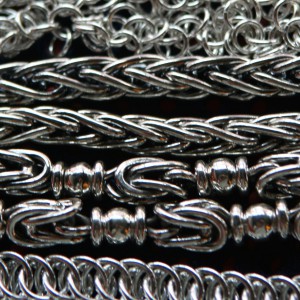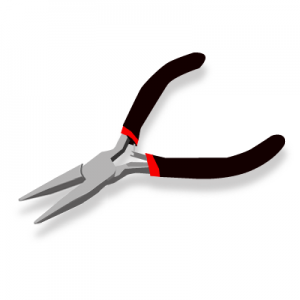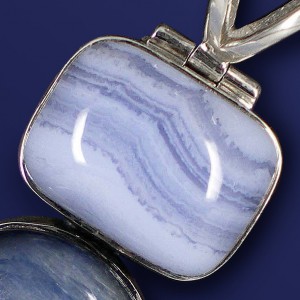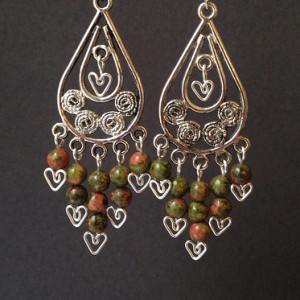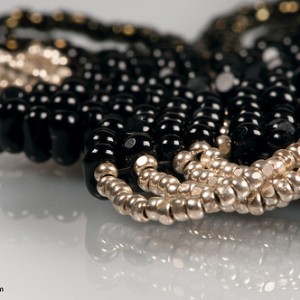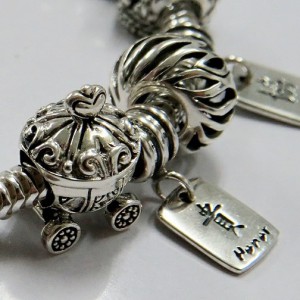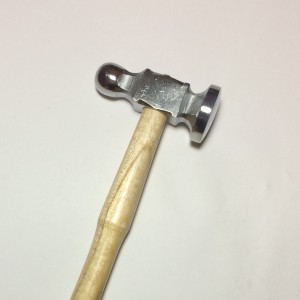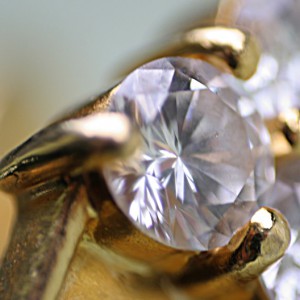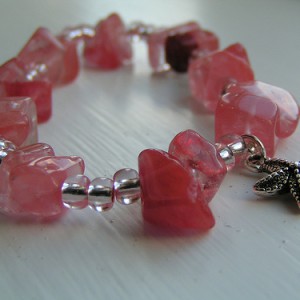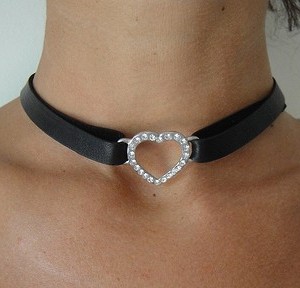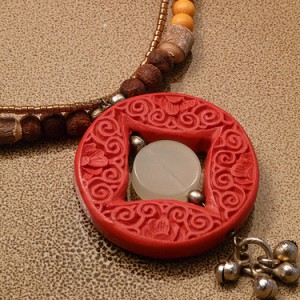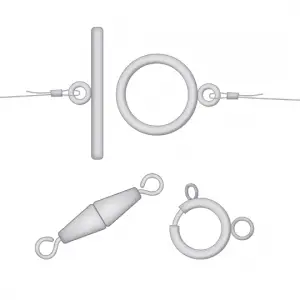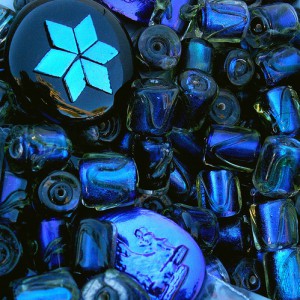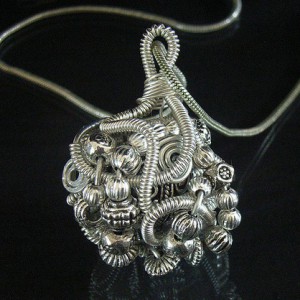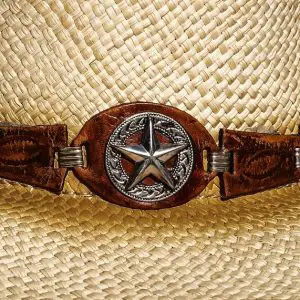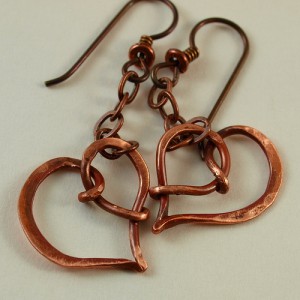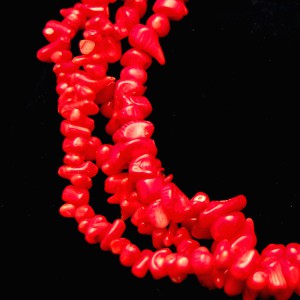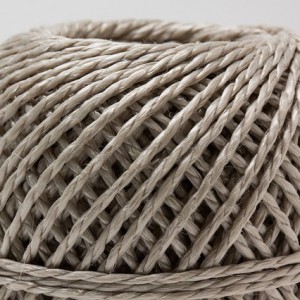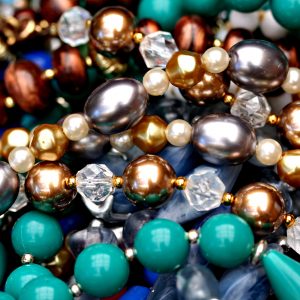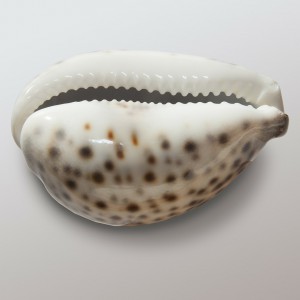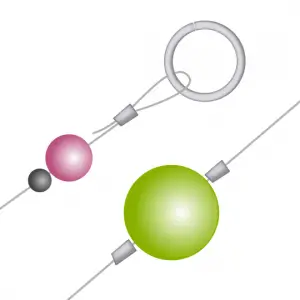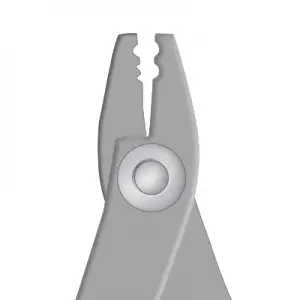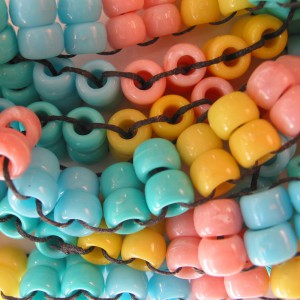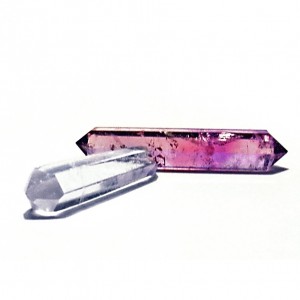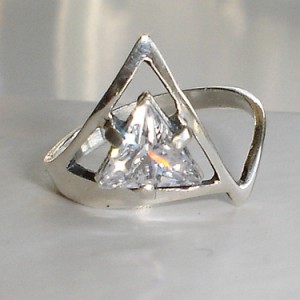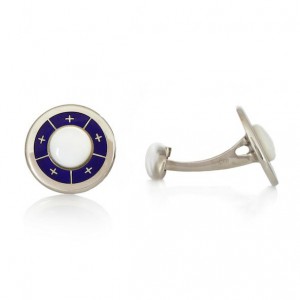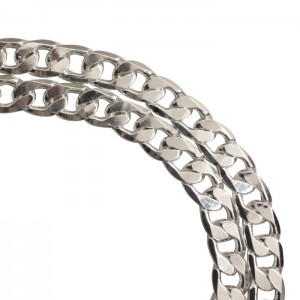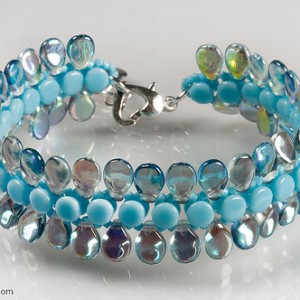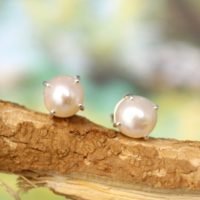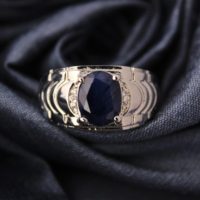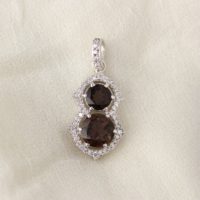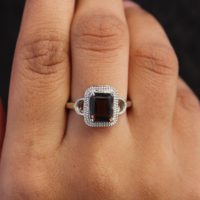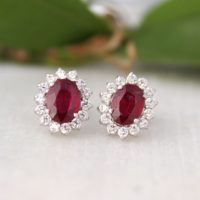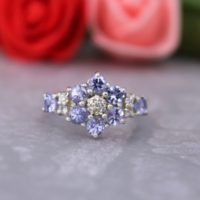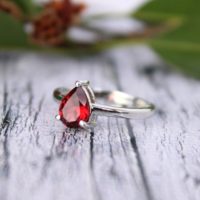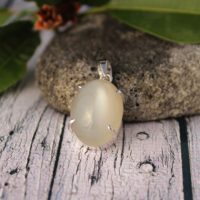Beading Glossary: Letter C
Callotte
Metal findings that cover the knot at the end of a string of beads. Callottes (also called clam shells) clamp sideways onto the knot. Tying the knot around a seed bead and adding a drop of glue secures the knot. Close the callotte with pliers and snip the excess thread. Also called clamshells or bead tips.
Chain Nose Pliers
Chain-nows pliers are rounded on the outside but have flat inside edges. They are good for gripping wire or a jump ring, as opposed to round-nose pliers, which are better for making loops.
Chalcedony
A subset of quartz. Chalcedony refers to cryptocrystalline quartz, that is, quartz whose crystals are too small to be seen, and includes agate, bloodstone, carnelian, chrysoprase, jasper, and onyx. This can be contrasted with macrocrystalline quartz such as amethyst, citrine, clear quartz, rose quartz, smoky quartz, and tiger’s eye. Here’s a thorough explanation.
Chandelier Earrings
Earrings with dangles that hang from a base, sometimes on multiple levels. They can range from elegant to funky in style. The dangles give the earrings movement. photo credit
Charlotte Beads
A type of seed bead where one side is cut (faceted), making them sparkle. Originally they were only made in 13/0 and therefore charlottes in other sizes are sometimes referred to as “true cuts” or “one cuts”.
photo creditChasing Hammer
A light hammer with a large, slightly rounded striking area. Used for hardening wire or creating a hammered wire look.
Cherry Quartz
A manufactured stone that resembles strawberry quartz but is actually glass. photo credit
Choker
A choker is the shortest length of necklace, worn very close to the neck or sometimes high on the neck. While chokers go through cycles of popularity in modern fashion, they have been a form of jewelry since ancient times.
photo creditCinnabar
A soft stone composed of mercury sulfide, cinnabar is bright or brick red in color and is often carved in intricate fashion. Today, much jewelry called cinnabar is actually a heavy molded polymer made to resemble cinnabar beads, or red lacquered wood. photo credit
Clasp
Any of a number of fasteners that hold the ends of a piece of jewelry together. Most are metal or wire: examples include lobster claw clasp, toggle clasp, barrel clasp, and fish hook clasp.
Cobalt
A lustrous, magnetic, silvery-white metal with a blue tint. Cobalt has been detected in Egyptian sculpture and Persian jewelry dating all the way back to third millennium BC, and in Chinese artifacts dated as early as AD 607. True cobalt beads are not often seen in typical beading applications. However the term cobalt is used to describe the deep, lustrous blue color of beads made of other materials. photo credit
Concho
Round or oval metal pieces that are often embossed with western designs. Conchos are popular in creating costume jewelry with a western motif, as well as hat and belt decorations.
Copper
Copper is a reddish-orange metal and one of the elements in the periodic table. Pure copper is soft, so it is often mixed with other metals to create stronger alloys like bronze and brass. Copper is also usually the main alloying metal in sterling silver. Copper is a very good electrical conductor, and is sometimes used to make therapeutic bracelets. photo credit
Coral
Precious coral beads are made from harvesting deap-sea coral beds that are formed from the exoskeletons of the coral sea creature, and forming that coral into beads. Other coral beads are harvested from other sources of coral and died red. Corals of all kinds grow very slowly, and harvesting has depleted the world-wide supply. Regulations are beginning to protect them, much like ivory, but many places where coral is harvested are still unregulated.
Costume Jewelry
Originally, costume jewelry was over-the-top, large and fake to be seen from the stage. However, many people also refer to costume jewelry when describing jewelry made of faux gemstones and metals like nickel, instead of precious gemstones, semi-precious gemstones, gold, silver, or platinum (though sometimes the clasps are made of gold or silver).
Crimp Beads
Crimp beads are small metal beads that you squish (crimp) onto beading wire to make the beads stay where you want them, or connect beading wire to a jump ring or clasp. They can be corrugated or smooth.
Crimping Pliers
Specialized pliers for squishing crimp beads. Recommended for those who plan to use crimp beads often.
Crow Beads
Crow beads are similar in shape to seed beads and pony beads, but much larger and more squarish. They are cut from tubes of glass or plastic and tumbled and polished to give a smooth rounded, slightly oval finish. Crow bead size is commonly 9mm (with 5mm hole) or 6mm (with 3mm hole). They are popular for using in hair braiding, fringe, and some Native American styles of jewelry.
Crystal
This can refer to many things, but in beading it usually means either naturally occuring quartz gemstones, or man-made leaded glass beads. Adding lead to glass beads makes them sparkle more; the more lead, the higher quality the bead. It also adds weight, so really light “crystal” beads are probably just glass. Man-made crystal beads come in a variety of sizes, shapes, and colors like cubes, rounds, rondelles, and specially shaped pendants of all kinds. There are many types of crystals available, but Swarovski crystals seem to be the most popular and are widely considered the highest quality.
Cubic Zirconia
A synthesized mineral used as an affordable substitute for diamonds. While similar in appearance, diamonds are somewhat harder and lighter. Cubic zirconia gemstones have been made commercially since 1976. photo credit
Cuff Link
A decorative fastener, similar to a button, which is used to secure the ends of a shirt cuff together. These types of cuff links are most often made of precious metals and may contain gemstones. A bangle type bracelet in the form of a wide band is also referred to as a cufflink. It may be adjustable with an opening to slip onto the wrist or could be two pieces that have a hinge on one end and a clasp on the other. Beaded cufflinks can be fashioned using bead stitching or by affixing beads to another surface using adhesive.
Curb Link Chain
A chain in which the links are oval and twisted so they’re made to lie flat.
Czech glass
Glass made in the Czech Republic, where the tradition of craftsmanship in glass-making goes back centuries. Also called Bohemian glass or Bohemia crystal. photo credit
